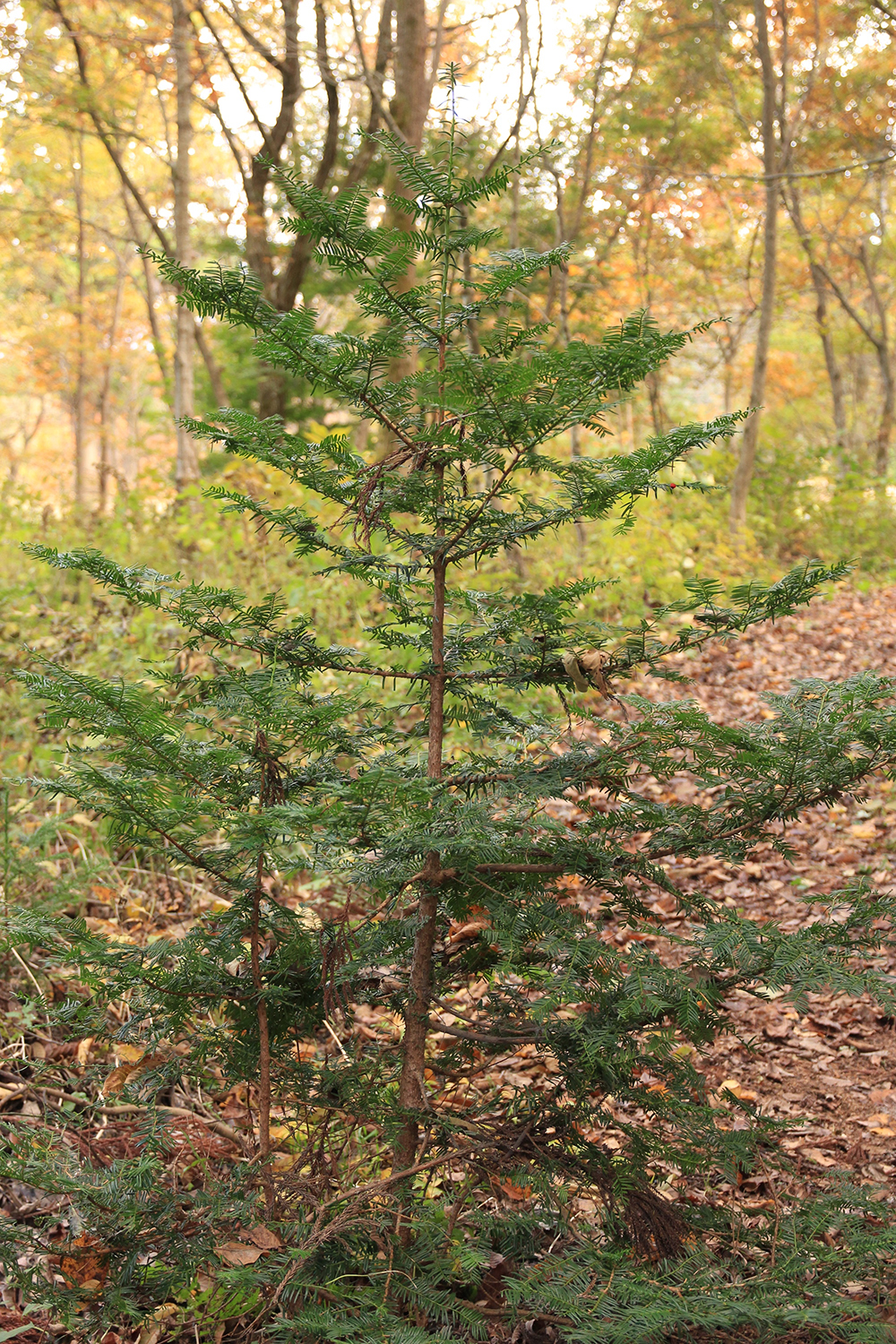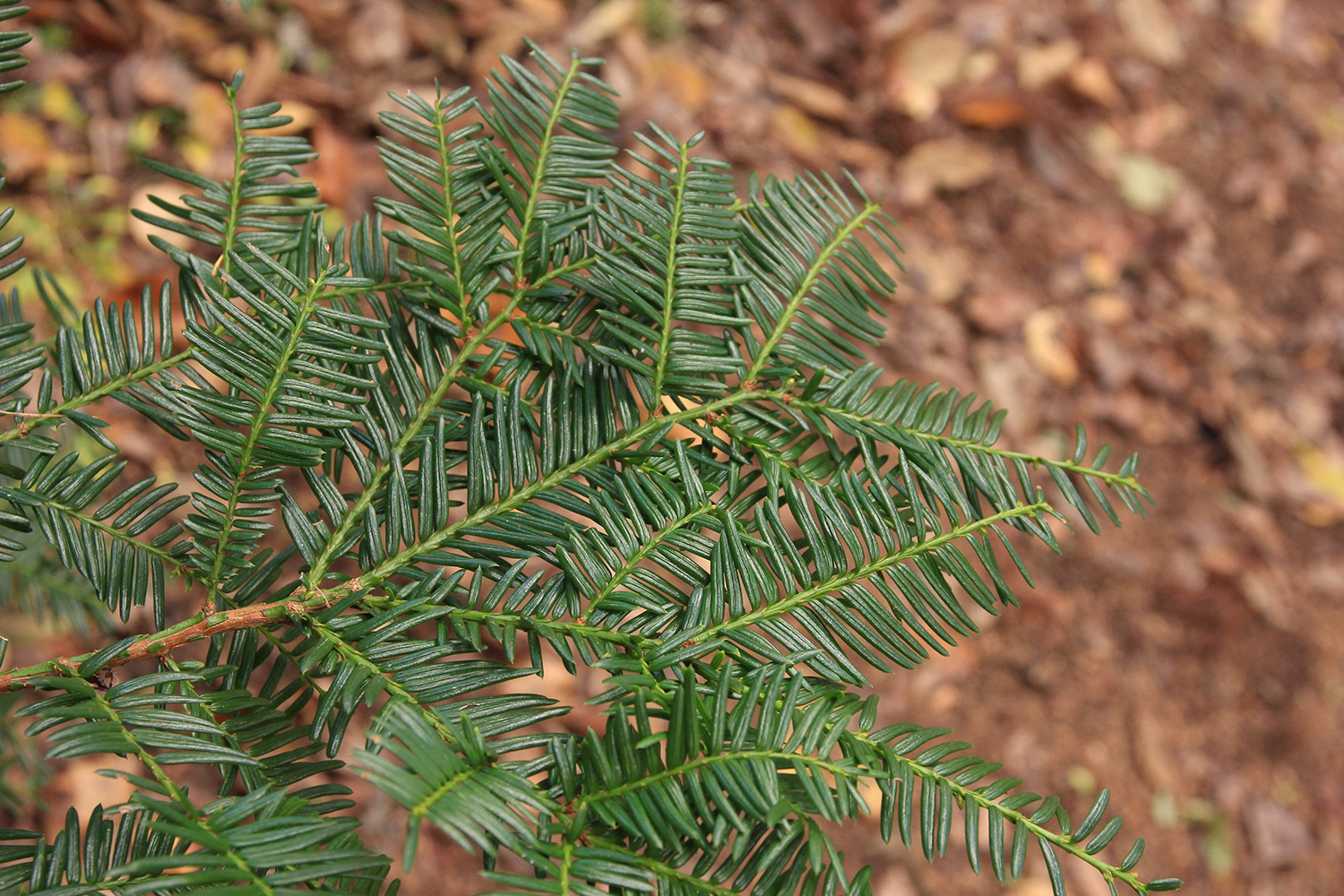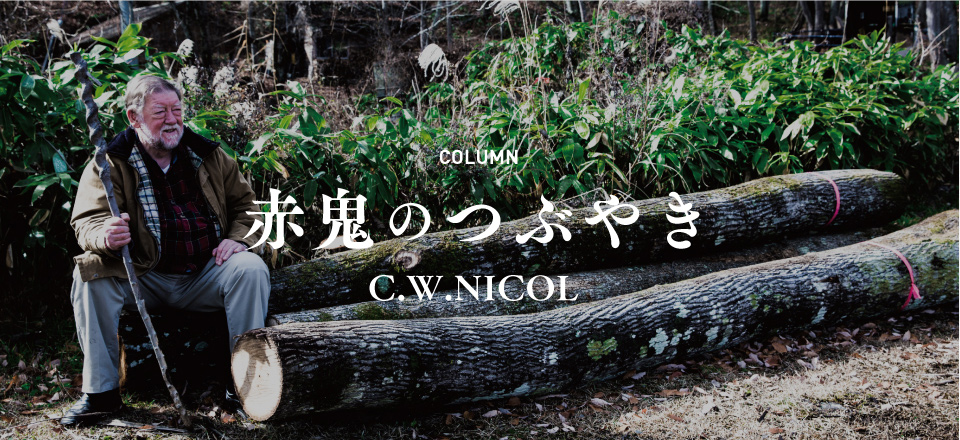Column
【赤鬼のつぶやき C.W.ニコル】イチイ(Yew 学名Taxus cuspidata)
風よけや垣根に使われているイチイは、長野ではおなじみの木です。アファンの森にも数本のイチイがありますが、まだ小さく成熟していません。わたしたちが植えたものではないので、どのようにしてここに運ばれてきたのか、わかりません。イチイに含まれるタキシンはアルカロイドの一種で、人間や動物を殺してしまうほどの有毒性を持っています。摂取すると心臓が止まることがあります。
ニホンイチイ(学名はTaxus cuspidata)は、日本、韓国、北東中国、南東ロシアに自生しています。ゆっくりと成長する常緑樹で、18メートルほどの高さにまで達することがあります。深い緑色で、針のような葉は1から3センチくらいの長さです。イチイはどの部分も毒がありますが、赤く熟した実だけは別です。やわらかくて甘い実がなり、てっぺんが開いていて中にある種が見えます。ただし種は有毒なので、種の皮を消化しない消化機能を持っている特別な種類の鳥だけがそれを運ぶことができます。おそらくこうしてわたしたちの森にもイチイが運ばれて来たのではないかと思います。
 ヨーロッパ、特に英国では、イチイが歴史的にも文化的にも非常に大きな存在感を誇っています。イギリスイチイ(学名はTaxus baccata)は弓に用いられています。表皮に近い辺材はとてもしなやかで曲がりやすく、中心部分の心材は赤く、圧に耐えるすばらしい性質があるのです。ウェールズや英国の大弓は、騎士の鎧や鎖でできた防具を貫く矢をも放つと言い伝えられています。
ヨーロッパ、特に英国では、イチイが歴史的にも文化的にも非常に大きな存在感を誇っています。イギリスイチイ(学名はTaxus baccata)は弓に用いられています。表皮に近い辺材はとてもしなやかで曲がりやすく、中心部分の心材は赤く、圧に耐えるすばらしい性質があるのです。ウェールズや英国の大弓は、騎士の鎧や鎖でできた防具を貫く矢をも放つと言い伝えられています。
ヨーロッパイチイは、時に三千年を超えるほど大きく成長します。特に教会や墓地で見かけます。紀元前の時代には、イチイが長い冬の間も緑を保つ一方で殺傷能力を備えていることから、生命と死の両方に結びつけられていました。そのため、羊や牛など放牧する動物を飼う人々に対して、家畜たちが埋葬地へ迷い込む危険を示すために、これらの聖性のある場所へ植えてあったのではないかと言う人もいます。そして弓の需要は過剰なイチイの利用を引き起こし、ヨーロッパ各地の政府は、イチイの伐採と輸出をコントロールするために強力な手段を取っていました。

イチイの木は工作しやすく、楽器、特にリュートやギターといった弦楽器に用いられます。
また、イチイは癌の手当てにも用いられています。
C.W.ニコル
2018年10月
写真提供:C.W.ニコル・アファンの森財団
YEW – ICHII NO KI
The yew tree is fairly common in Nagano, mostly grown as a windbreak or hedge. In our Afan woods we have a few yew trees, but they are still small and immature. How they got there I don’t know, because we didn’t plant them. Yew trees are highly toxic, with taxine alkaloids that can kill humans and animals. Ingesting yew toxins can cause cardiac arrest.
The Japanese yew, whose scientific name is Taxus cuspidata, is native to Japan, Korea, northeast China and southeast Russia. It is a slow-growing evergreen tree that can reach a height of ten to eighteen metres, with trunks of mature trees being sixty centimetres in diameter at chest height. Yews have dark green ‘needle’ leaves, one to three centimetres long. All parts of the yew are toxic, with the exception of the berries, red when ripe. These berries are soft and sweet, open on top so you can see the seed. Seeds are toxic, but are carried by certain birds whose digestive systems do not break down the skin of the seed. That is probably how they came to grow in our woods.
In Europe, and especially Britain, the yew has had an enormous historical and cultural presence. The British yew, Taxus baccata, was the chosen wood for bows. The heartwood is red, with an outstanding ability to compress, while the yellow sapwood is elastic and very flexible. The range and power of the Welsh and English longbow is legendary, sending arrows that could pierce the armor and chainmail of mounted knights.
European yews can grow to great age, some exceeding three thousand years. They are often found in church and graveyards. In pre-Christian times the yew was associated with both life and death, staying green throughout long winters, but also with its ability to kill. Some claim that the yew was planted in sacred places to dissuade the owners of sheep, cattle and other grazing animals from letting their beasts wander over burial grounds. Demand for yew bows caused extreme over-use for hundred of years and all European governments took strong measure to control cutting and export of yew.
Yew wood is easily worked and has been used to make musical instruments, especially stringed instruments, from lutes to guitars.
Yew has also provided medicine for treating cancer.
C.W.Nicol
September. 2018
C.W.ニコル
作家・1940年イギリス南ウェールズ生まれ。1995年日本国籍取得。カナダ水産調査局北極生物研究所の技官・環境局の環境問題緊急対策官やエチオピアのシミエン山岳国立公園の公園長など世界各地で環境保護活動を行い、1980年から長野県在住。1984年から荒れ果てた里山を購入し「アファンの森」と名づけ、森の再生活動を始める。2005年、その活動が認められエリザベス女王から名誉大英勲章を賜る。2011年、2016年に天皇、皇后両陛下がアファンの森をご視察された。





